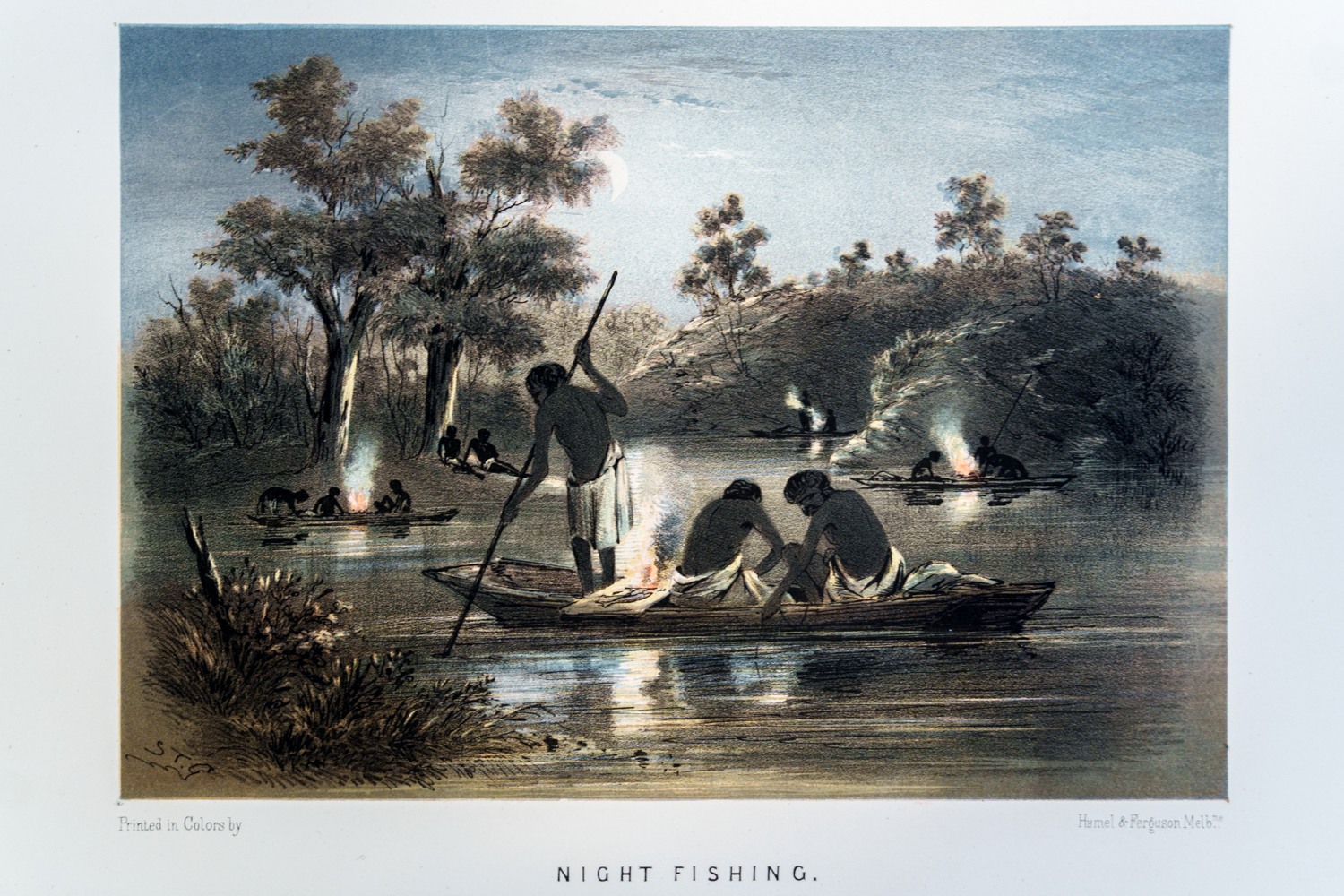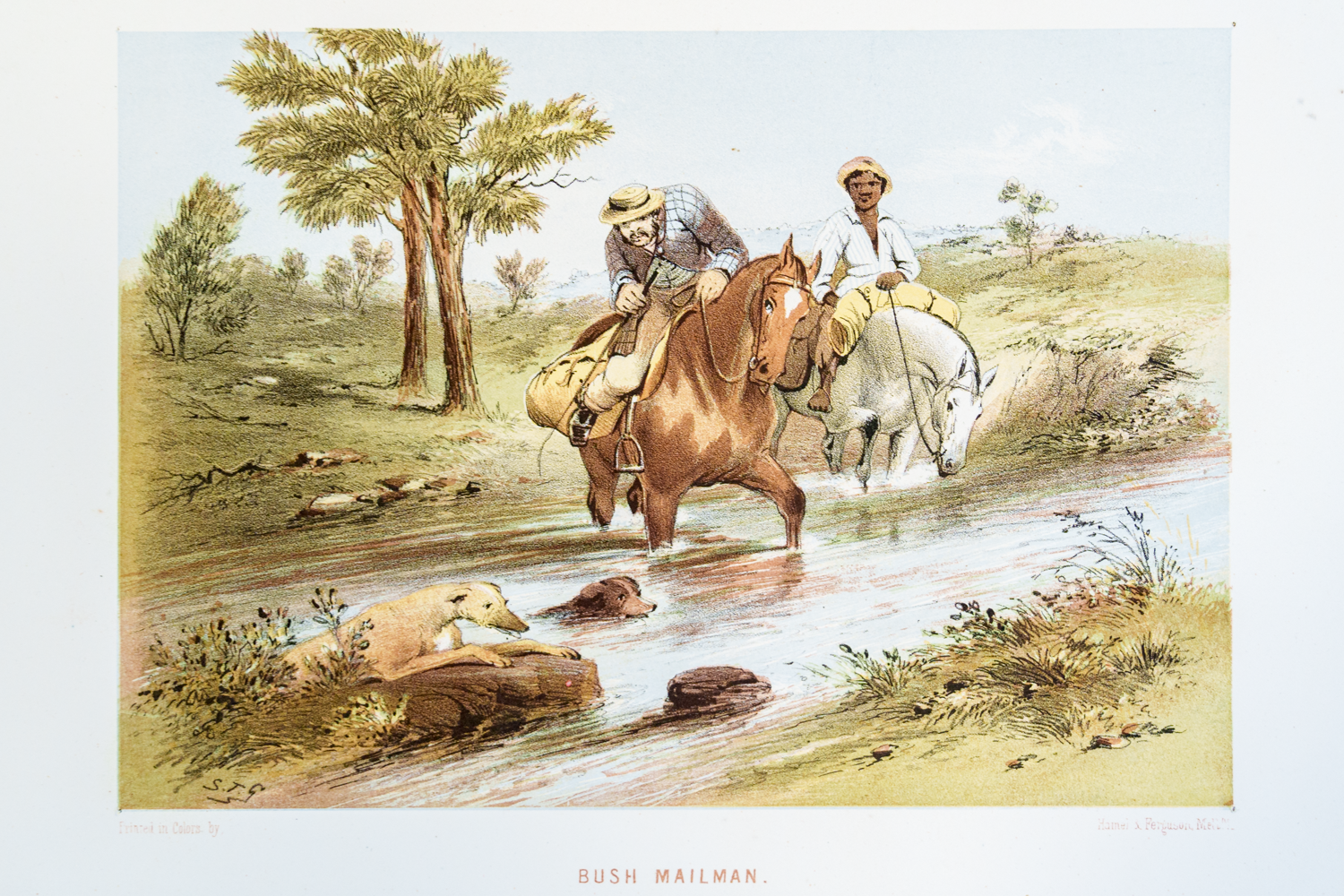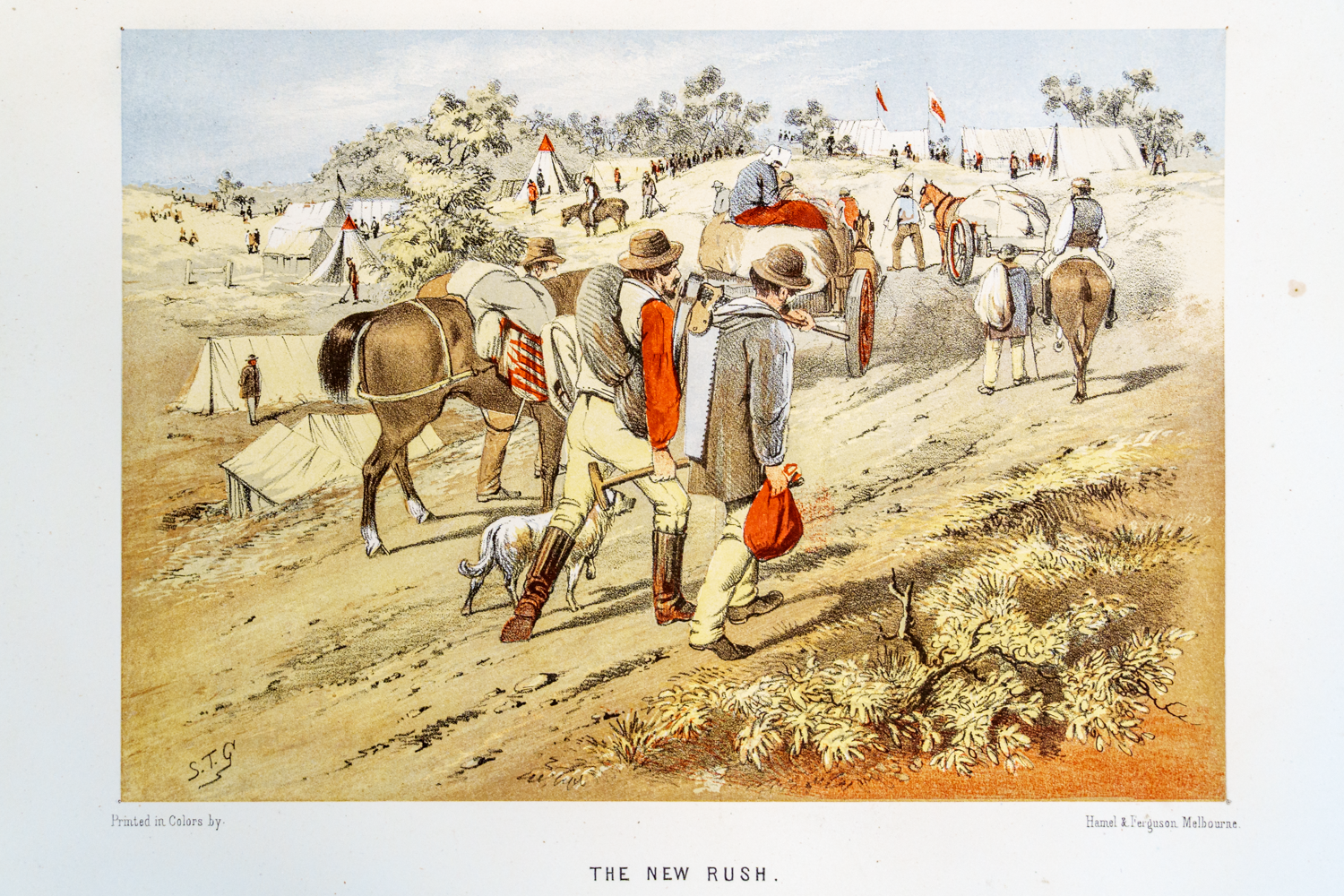

A collection of prints from The Australian Sketchbook by S T Gill published by Hamel and Ferguson, Melbourne, 1864-1865. These original prints are remarkable for the brightness of the colours and the lively depiction of the characters.
S T Gill is one of Australia's best known and admired artists of colonial life and particularly that of the gold fields.


These chromolithographs (original prints (with mats) show scenes from early colonial life on the Victorian goldfields and include bushrangers, a corroboree, a bush funeral, overlanders, prospectors and diggers heading for the gold fields. The Society's collection has some duplicates as well as a few missing from the series.
Samuel Thomas Gill (1818-1880) arrived in Adelaide in December 1839 in the Caroline with his parents and brother and sister. The following year he opened a studio in Gawler Place offering to prepare portraits of people, horses or dogs and to make sketches of houses or landscapes. In 1846 he joined the expedition to the north led by J A Horrocks as an unpaid draftsman. They got as far as the head of Spencer Gulf and discovered Gill Lake (Lake Dutton) where Horrocks had a fatal gun accident.
On his return to Adelaide Gill sold his pictures of the expedition and some of these are in the Art Gallery of South Australia. In 1846 George French Angas's South Australia Illustrated was published n London and this included three pictures by Gill - these are View of Hindley Street, Elevated Native Tomb at Myponga Vale and the Departure of Captain Sturt. (Jones (2021) pp282, 283). These are typical of the watercolours of urban scenes Gill painted in the 840's. In 1852 Gill went to the Victorian gold diggings where he completed his well-known pictures of everyday life in Victoria Gold Diggings and Diggers As They Are. He also went to New South Wales where he published lithographs of scenes in 1856 and 1861. In 1864 he returned to Melbourne and published The Australian Sketchbook showing rural and aboriginal life and scenes from the Victorian goldfields.

RGSSA catalogue number rgsp 759.994 G475 d cabinet 3, shelf 3
The following is from the Conclusion of an extensive article on S T Gill from the web site of the Old Treasury Building, Spring Street, Melbourne - "
"Despite the fact that his life was undoubtedly, at times, very difficult and his circumstances trying and tragic, it was S T Gill who, so brilliantly, often conveyed in a light-hearted or even comic, or at times, sad way, the life styles of those he met and the landscapes they inhabited. The appeal of his art lies in the fact that he was able to document the past in its tiniest details, to give us today a picture of the past which is as fresh as it was at the time when he wielded his paintbrush. An obituary in the Melbourne journal Tabletalk in 1891 described his talent: He was an absolute master of his materials, whether it was a simple black lead pencil, a brush full and flowing with Indian ink, or colours, bright, clear, pure and certain in their tones and gradations. Without exception, S. T. Gill is Australia’s best-known and most appreciated artist for evoking the colonial period of our history, especially the gold rush era. He drew history in the making for the most part, or history as he clearly remembered it. His output was vast, although it was not of an even standard. Some of it was good and some of it was very good!"
References
© The Royal Geographical Society of South Australia